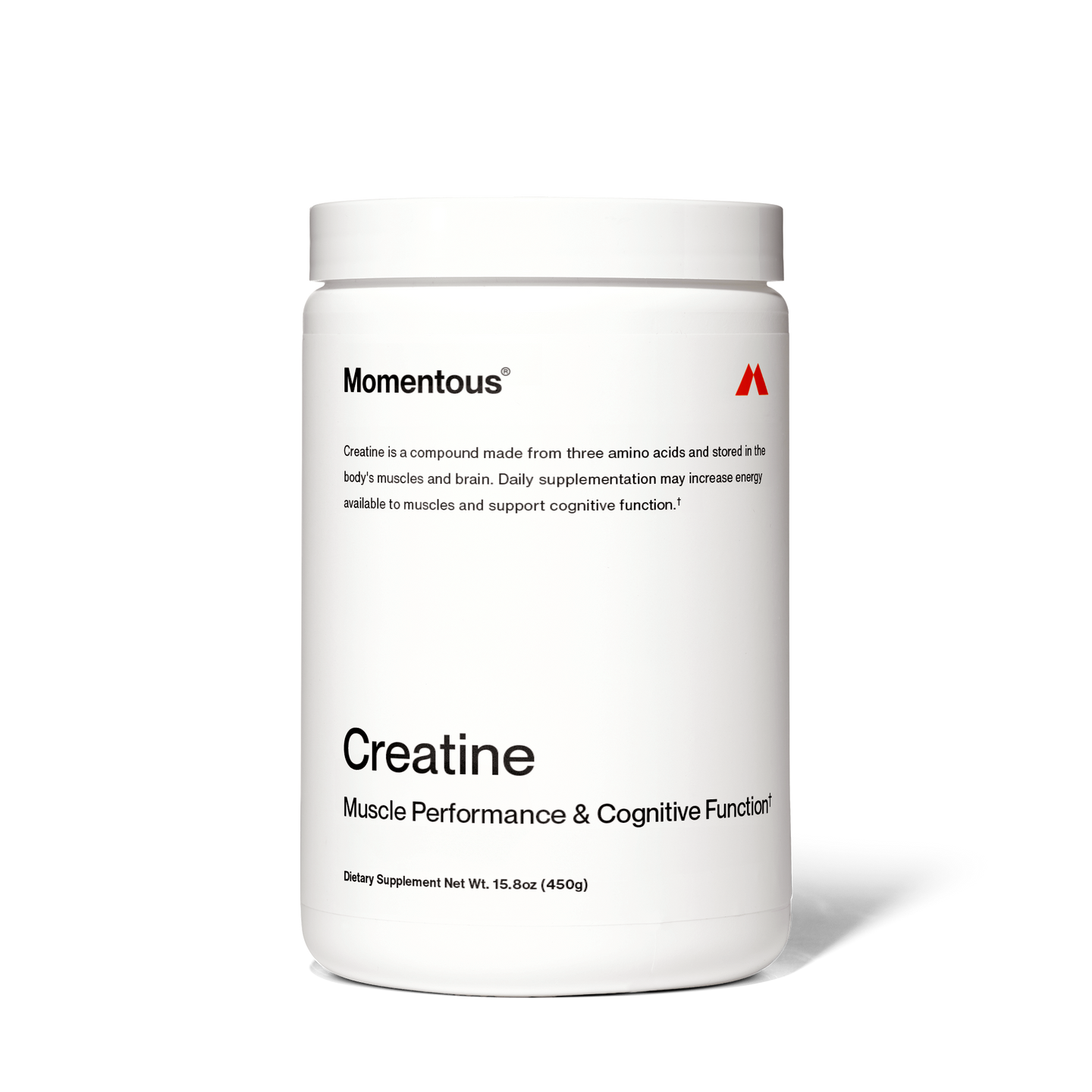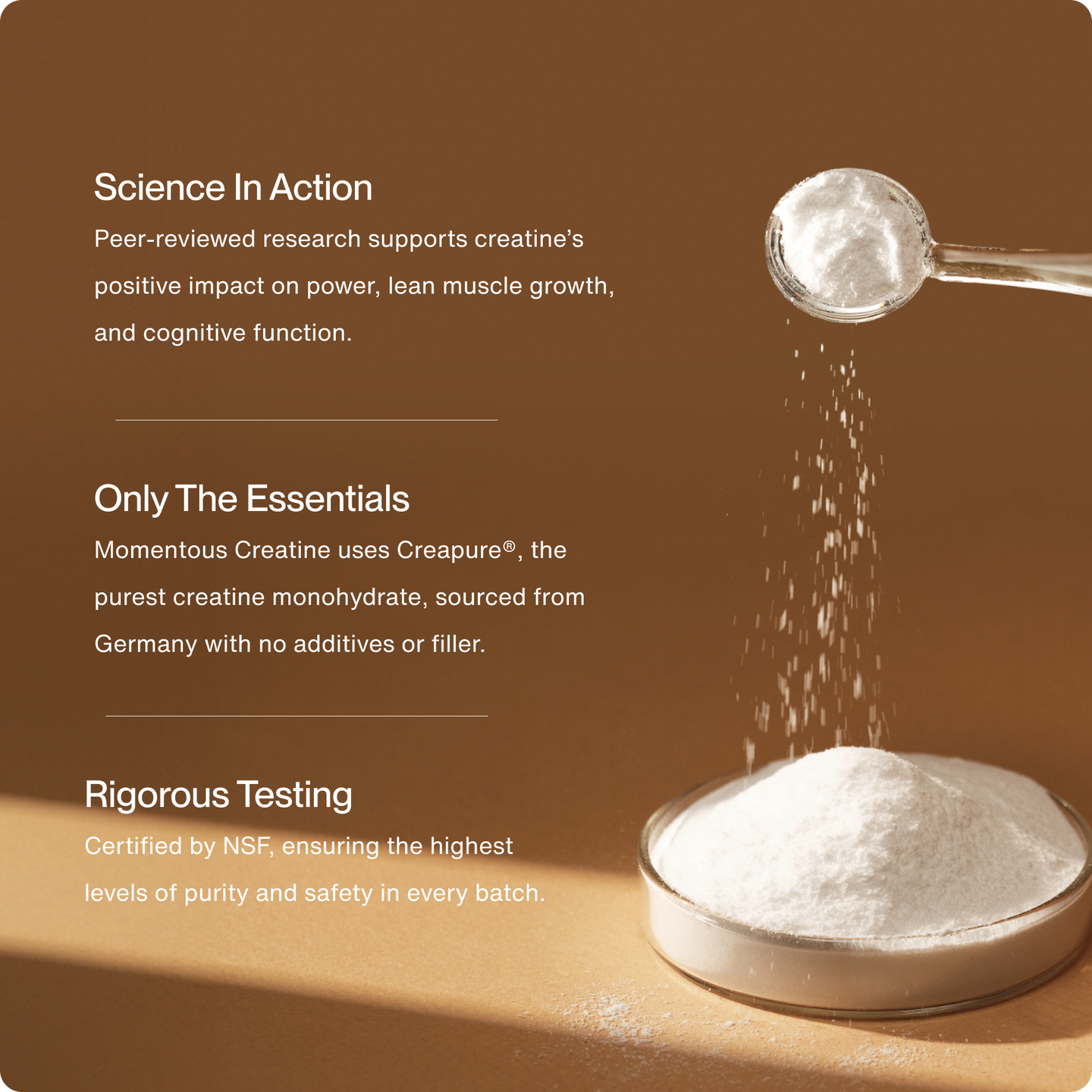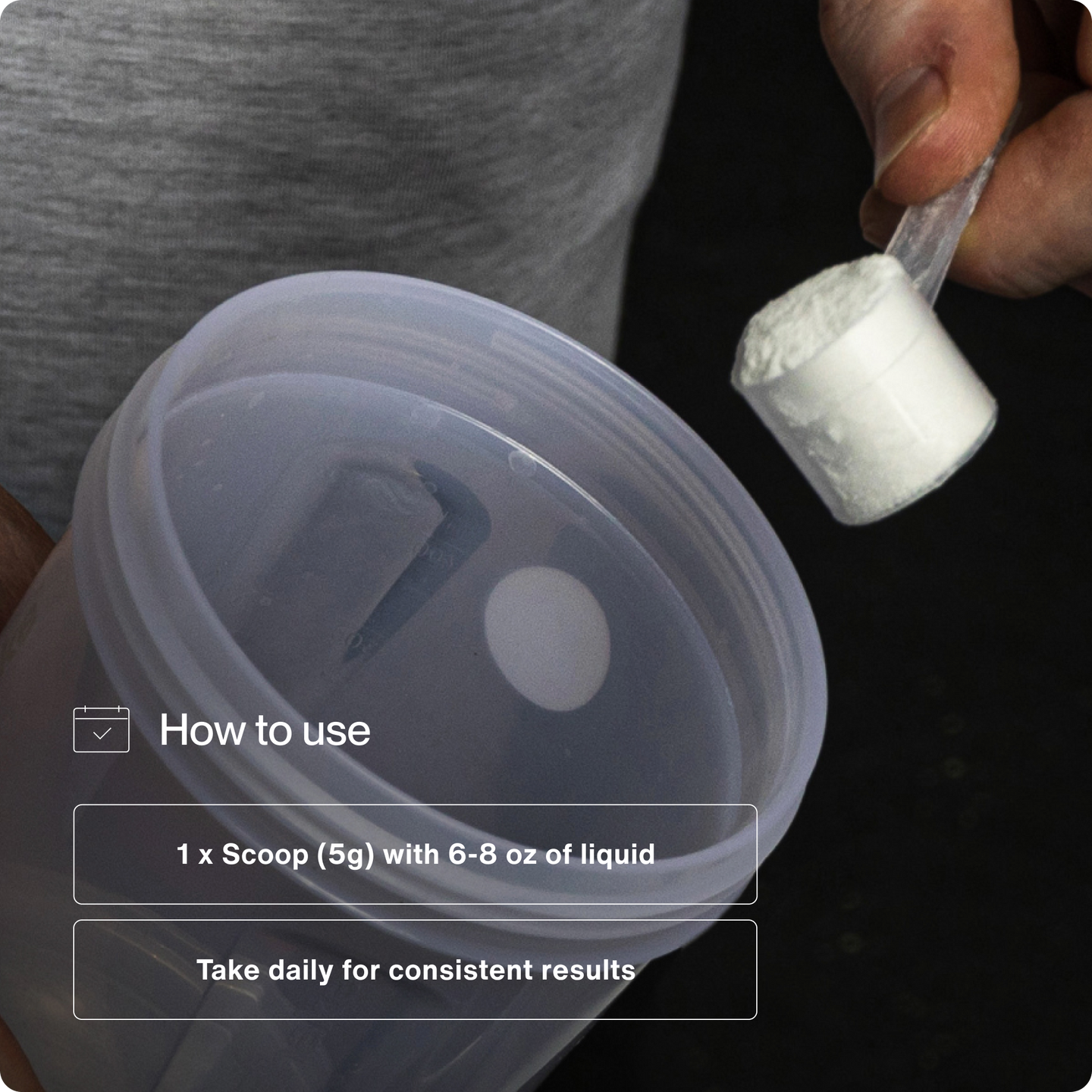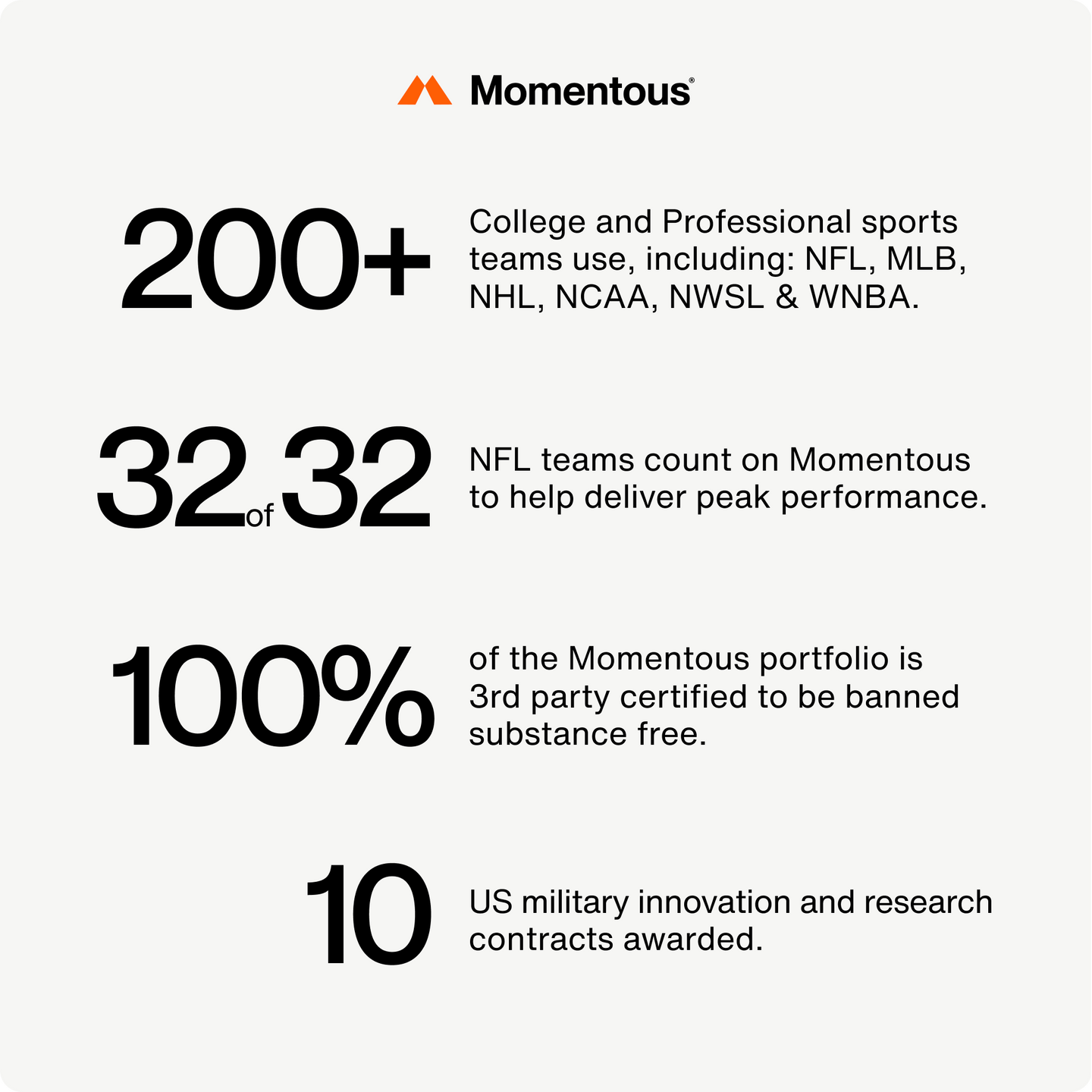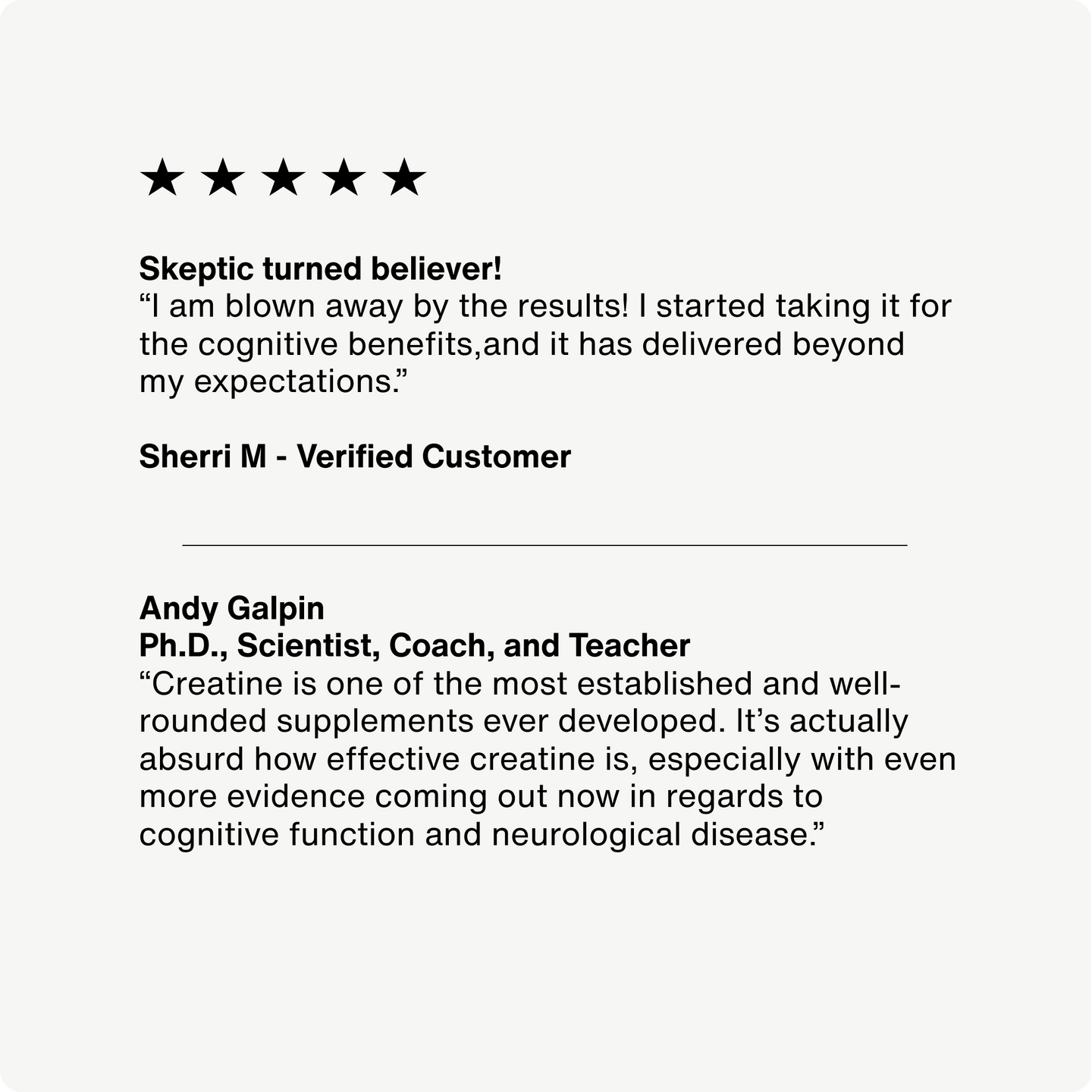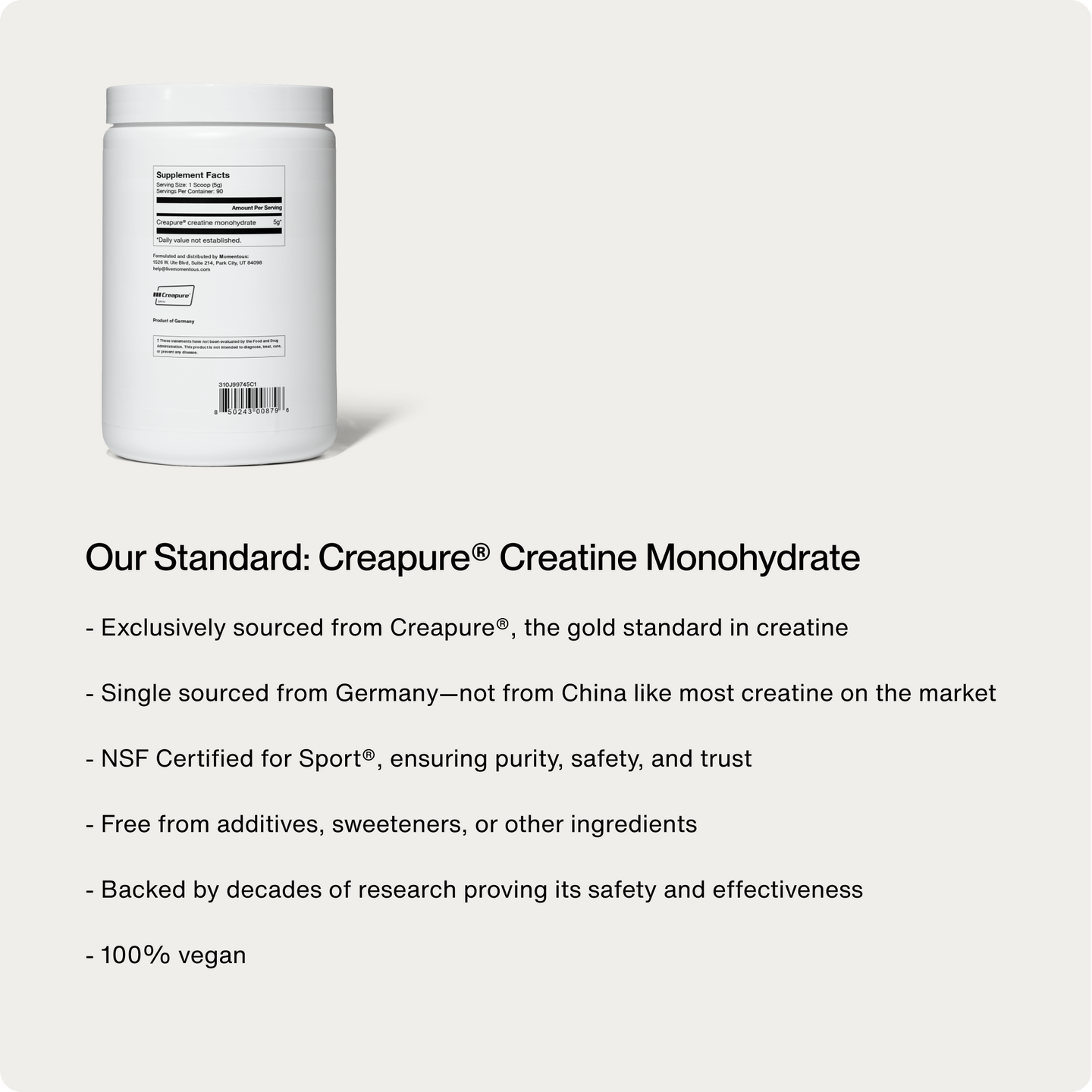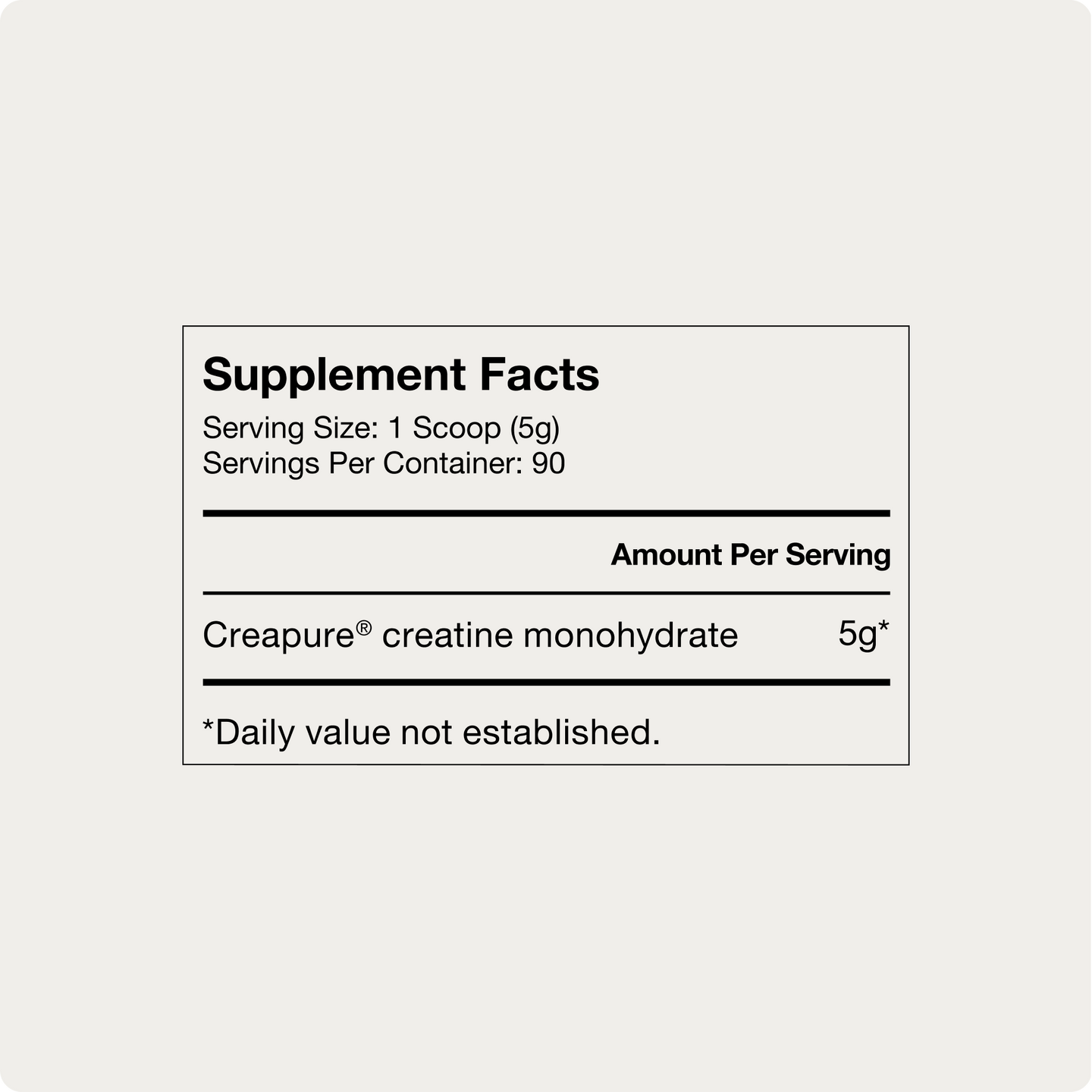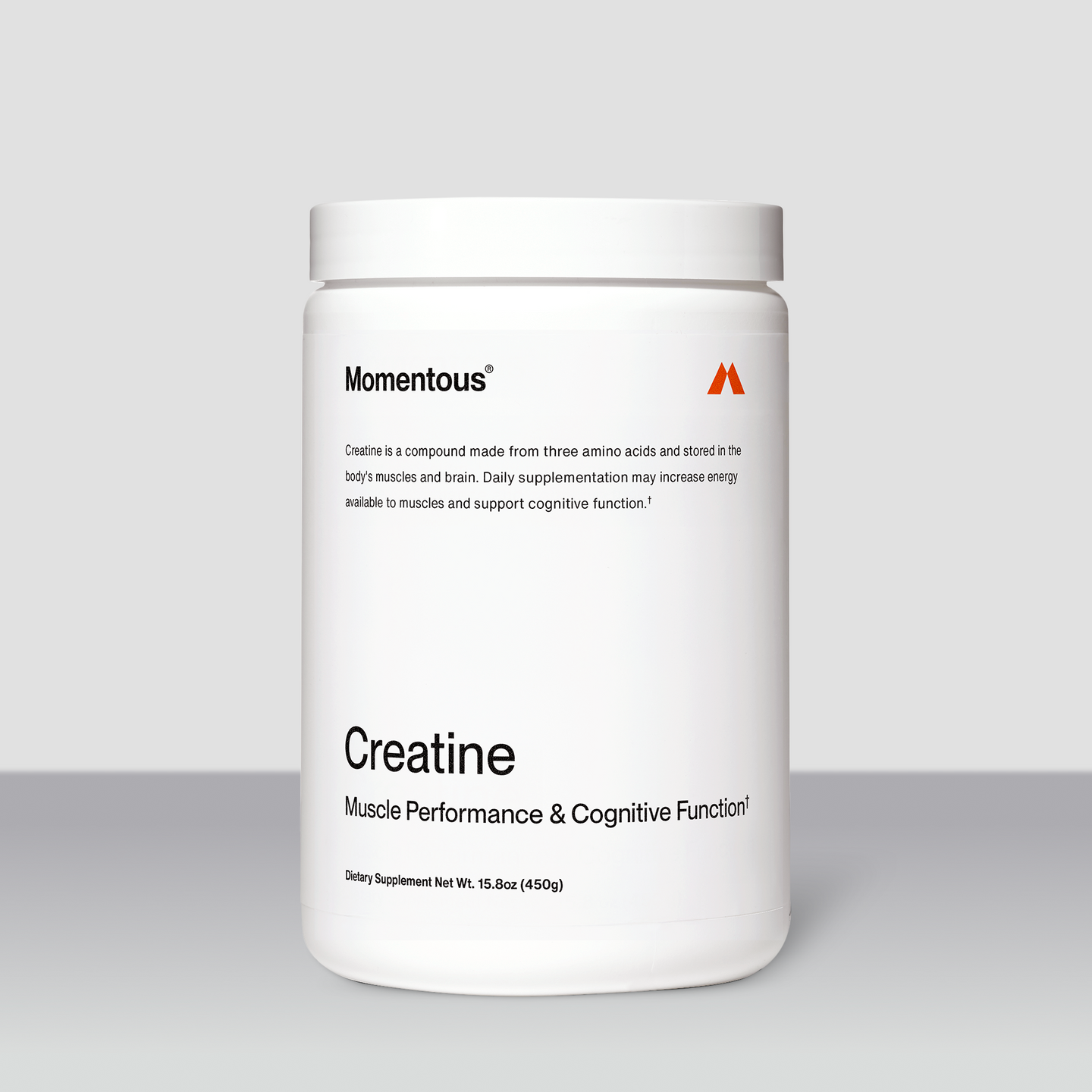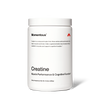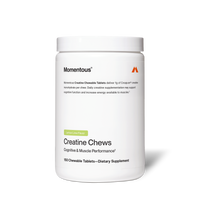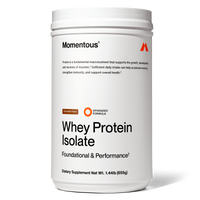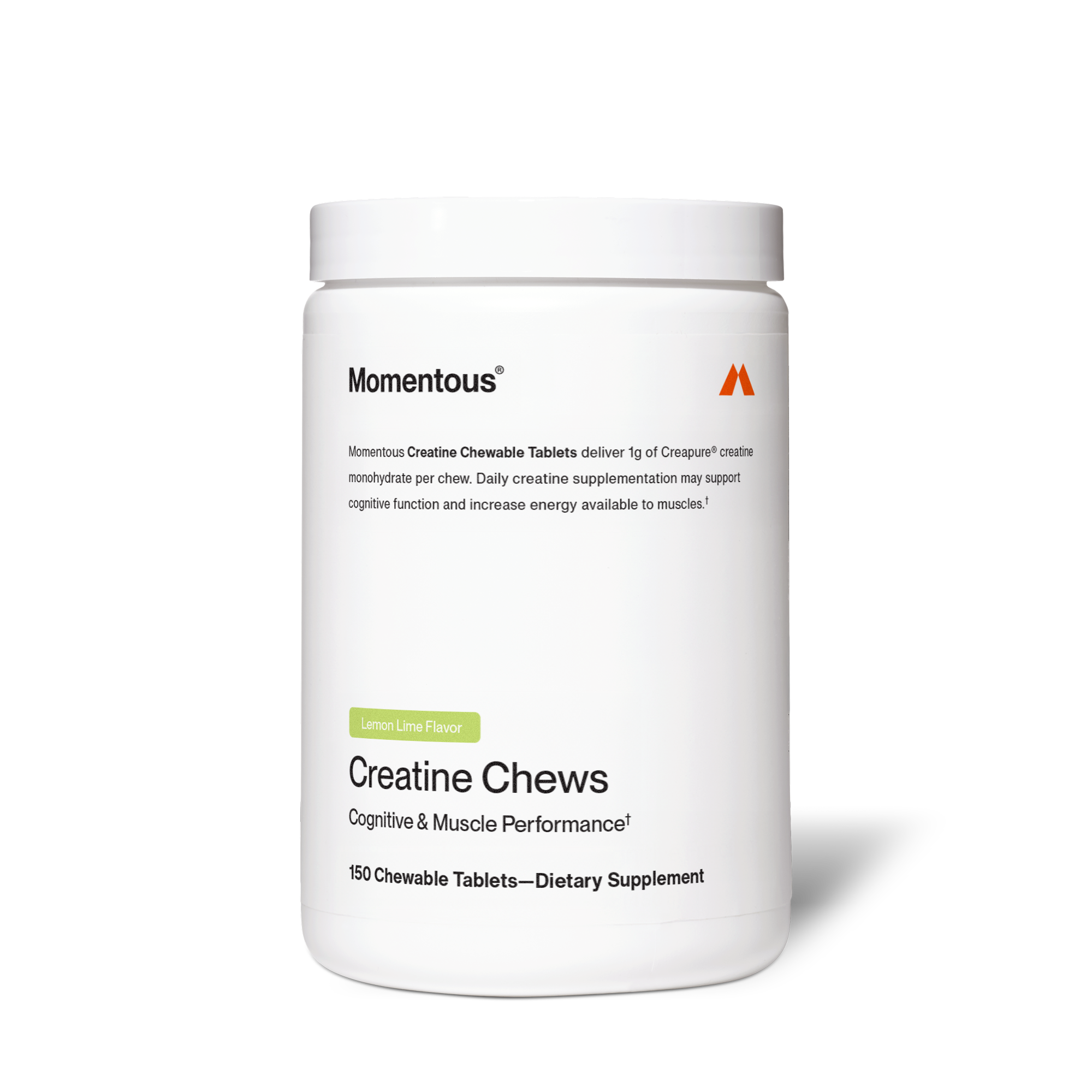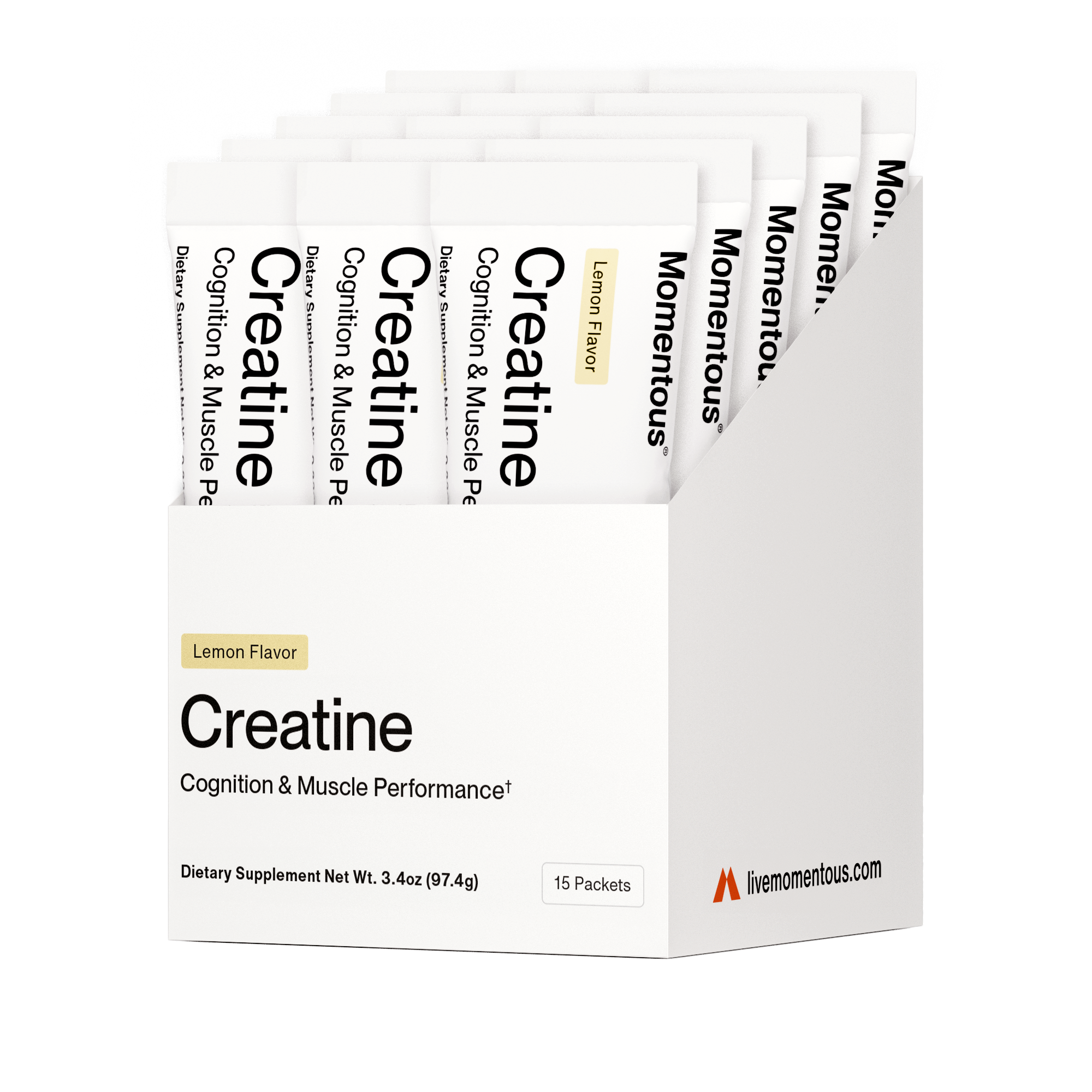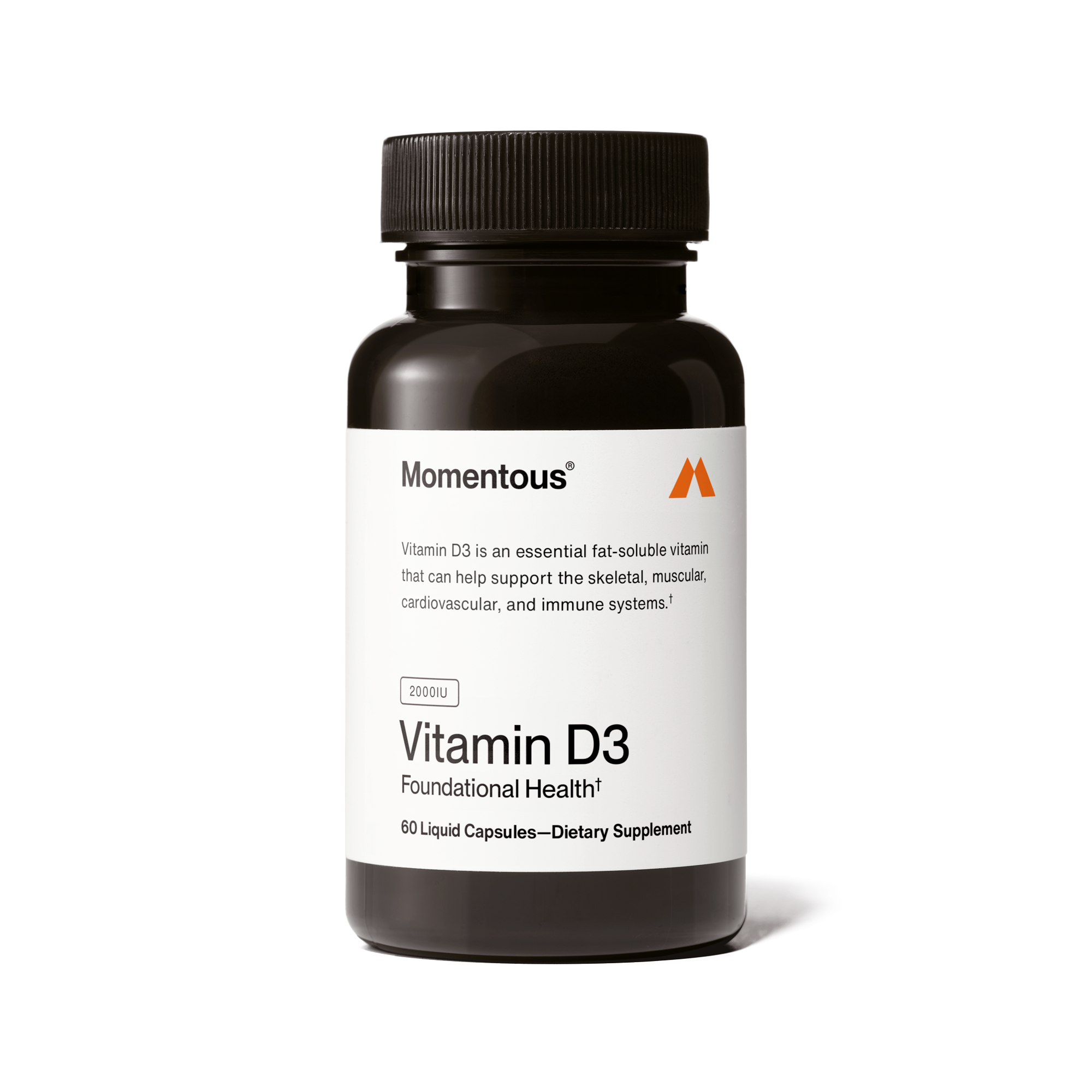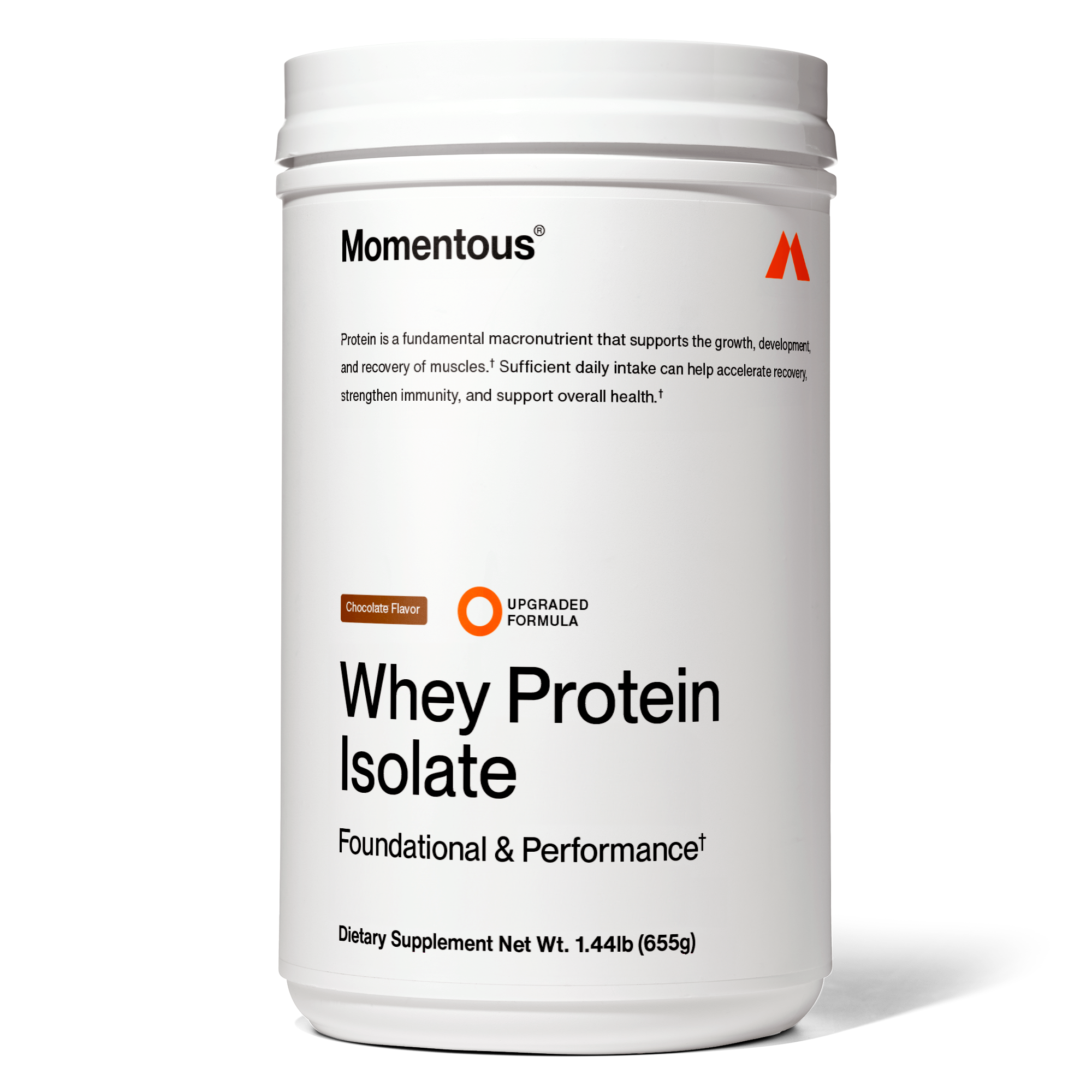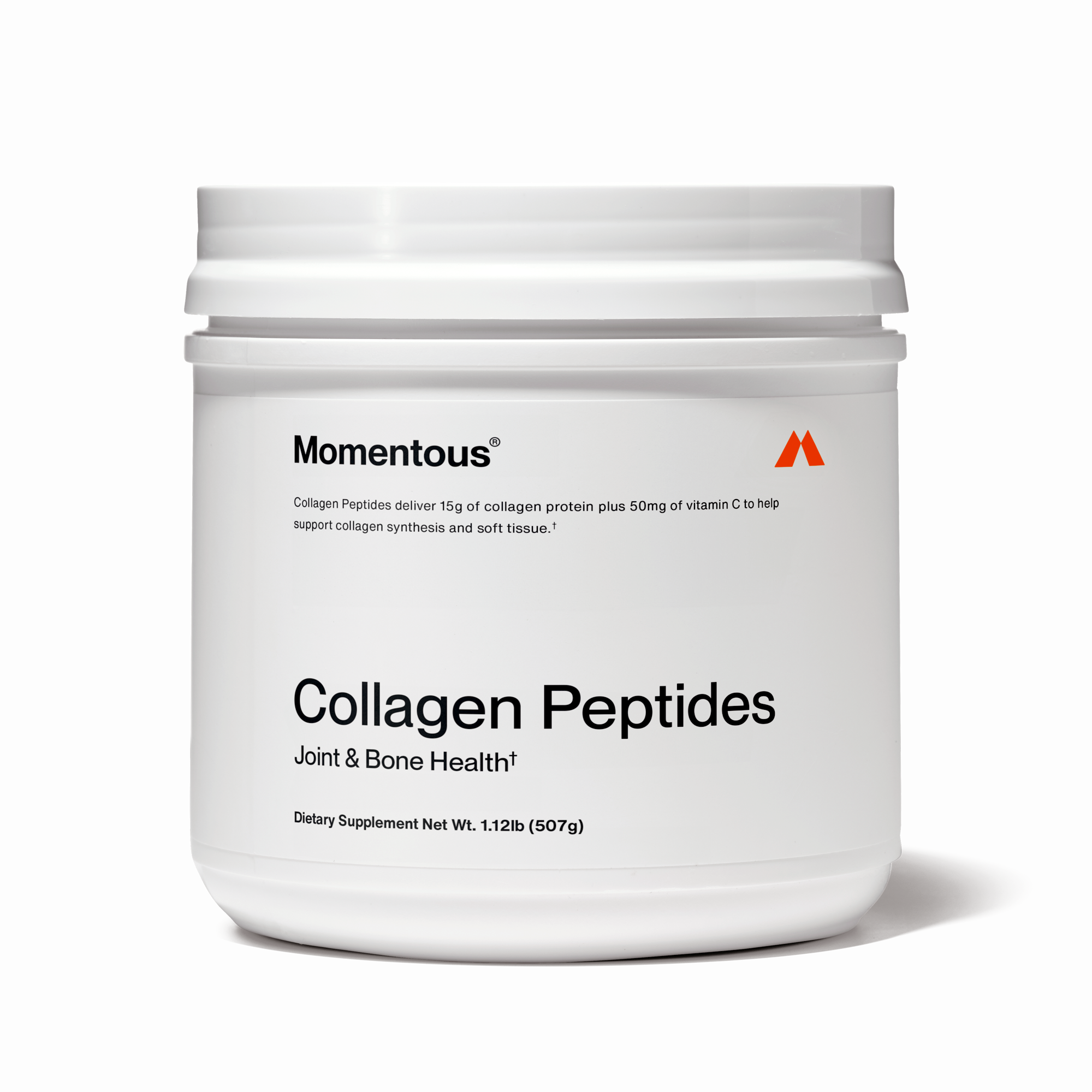Creatine
90 Servings Per Container: $/Serving
Pure Creapure® creatine monohydrate to support strength, power + brain performance.
- 5g of clinically backed creatine to fuel muscle and cellular energy
- Supports lean muscle growth, endurance, and recovery
- Enhances brain function and ATP production for mental clarity
Size: 90 Serving Jar
Frequently Purchased Together
Pure creatine monohydrate held to the highest standards
Our Creapure® Creatine is single-sourced from Germany and every batch is NSF Certified for Sport® so you can train with confidence knowing your brain + body are getting the best.
Supports daily muscle performance and cognitive function:
- Power Output & Endurance: By rapidly regenerating ATP, creatine boosts muscle strength, stamina, and performance.
- Muscle Growth & Recovery: When combined with resistance training, it promotes lean mass by stimulating muscle protein synthesis and reducing inflammation and oxidative stress.
- Cognitive Function: Improves brain energy utilization, memory, and focus—especially under physical or mental stress.
- Healthy Aging & Metabolic Function: Supports mitochondrial health, helps prevent muscle loss when combined with resistance training, and may enhance glucose regulation through improved cellular uptake.
- With consistent use, creatine supplementation can boost your overall energy levels and help decrease recovery time.
Creatine is a naturally occurring amino acid stored in muscles and the brain, where it plays a vital role in cellular energy production by increasing the body’s phosphate reservoirs and supporting production of ATP (adenosine triphosphate)—your body’s primary energy currency. During high-intensity activities, ATP is rapidly depleted; creatine helps regenerate it more efficiently, enabling you to push harder, recover faster, and perform better across repeated bouts of exertion.
In the brain, creatine supports neuronal energy metabolism, contributing to improved memory, focus, processing speed, and overall cognitive resilience. Emerging research even links consistent creatine supplementation to neuroprotective effects, potentially offering support in age-related neurological decline.
Momentous Creatine is made with Creapure®—the purest form of creatine monohydrate available, verified for safety and efficacy. It’s NSF Certified for Sport®, making it trusted by elite athletes and everyday high performers.
While creatine is present in small amounts in animal-based foods like beef and fish, supplementation remains the most effective way of hitting the recommended daily intake—especially for those following plant-based diets or with higher physical demands.
Mix 1 scoop with 6-8 oz. of water and consume within 30 minutes for maximum benefit—sitting in liquid longer than that will cause creatine to lose its efficacy.
Creatine: Creapure® Creatine Monohydrate
Momentous Creatine is sourced from Creapure®, the purest form of creatine monohydrate available and widely considered to be the gold standard of creatine. While the majority of creatine on the market is sourced from China, ours is a single-sourced ingredient from Germany with no additives, sweeteners, or other ingredients.
There are 5 credible reviews and studies related to this product:
5. Effect of creatine supplementation on body composition and performance: a meta-analysis
Frequently Asked Questions
Take one scoop (5g) or one packet (5g) of Momentous Creatine daily with 6-8 fluid ounces of water or your preferred liquid. Consistency is key—most people notice improved performance and recovery when Creatine is used regularly over several weeks.
Pair it with a balanced diet and a solid workout routine to see the best results.
Our Momentous Creatine is available in an unflavored and lemon flavor.
Our unflavored Creatine is available in both a 90-serving jar and a 15-count travel pack. The unflavored version won’t affect the taste of water, smoothies, or protein shakes. Its micronized powder mixes easily, making it simple to incorporate into your daily routine.
Our new Creatine Lemon flavor is available in a 15-count travel pack. The naturally-sweetened offering is a refreshing twist on our same gold standard Creapure® Creatine. Add to water on-the-go so you never miss a day.
Take creatine whenever it works best for your daily routine.
We recommend mixing creatine close to when you plan to drink it, and consume within 30 minutes for maximum benefit—sitting in liquid longer than that will cause creatine to lose its efficacy.
No, Creatine does not cause excessive weight gain or bloating for most people. Any initial weight increase is typically due to water retention in the muscles, which supports performance and recovery. This typically balances out with continued use and a healthy routine.
Yes, Momentous Creatine is sourced from Creapure®, the gold standard in purity and quality, and is NSF Certified for Sport® meaning it meets strict testing standards and is trusted by athletes worldwide. Research supports daily Creatine supplementation for performance and recovery benefits.
Most users notice improved performance and recovery within 2-4 weeks of consistent use. The exact timing depends on factors like activity level and overall diet. Consistency in your routine helps speed up the benefits.
Absolutely! Creatine Monohydrate benefits women by improving energy, recovery, and lean muscle tone. It won’t cause bulky muscle gain and is ideal for anyone pursuing fitness goals.
For a complete performance stack, we recommend combining Creatine Monohydrate, Whey Protein, and Omega-3. This is what we call ‘The Momentous Three’. This trio creates the optimal foundation to build the rest of your supplement routine around.
Momentous Creatine stands out by using Creapure® from Germany—renowned for unmatched purity over cheaper sources from China. It’s also NSF Certified for Sport®, ensuring it meets strict quality and safety standards. This makes it one of the cleanest and most reliable creatine options on the market.
Yes. Our Creatine is NSF Certified for Sport®. NSF Certification ensures purity and potency, with every batch tested for heavy metals, harmful additives, and label claim accuracy to meet the highest standards.






